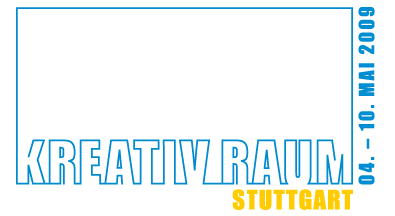Some notes on the first session at the Tuesday workshop session at Web 2.0 Expo Europe: “Collaboration Techniques that really work” with Leisa Reichelt. I really enjoyed the workshop, it was both easy going and immensely interesting. I went there to learn about new working patterns and methods, and learn about how to adopt these to my consulting practice.
We started off with all participants presenting themselves, at a minimum three tags were said. I got the impression of a pretty mixed crowd, i.e. there were developers, journalists, designer, start-uppers, business developers – and even one or two big Co guys too – mainly with an european background.
OK, here we go:
- Collaboration = working together, especially with the enemy 😉
- Collaboration ain’t inviting a bunch of people to a meeting at the beginning of a project
- Collaboration ain’t working separately on the same project, yes, it’s all about the „actually working together“, not just contributing bits to a pot
Well, we all agreed that good collaboration is rare, it’s percveived as somehow fluffy, even when the benefits are so obvious. Some reasons:
- good for team building & morale
- good for communication
- support and build up cross disciplinary skills and insight
- more heads, eyes, perspectives enrich our work
- we build up team & shareholder buy in
- it’s fun too, yes, fully acknowledge this – people are social animals, we like it to be together with people we like, and with people that have energy and commitment (for the project)
If we do it right we can
- turn stakeholders or customers into collaborative partners
- build collaboration into project methodology – i.e. collaborate regularly with your project team
- collaborate with your peers & invite other expert perspectives – Leisa offered us this good idea of inviting “wildcard collaborators” from the outside, they help us to think tangentially and integrate new perspectives
Ok, then, when to collaborate?
- at the beginning of a project, but not JUST at the beginning
- when you’re stuck, i.e. for trouble shooting and problem solving (this is collaborating with a narrow focus)
- when you’re looking for inspiration (yes, wide focus)
- regularly, well, it must be trained …
What kind of tools make sense?
- people (the right ones!), i.e. people that like to collaborate
- sticky notes & pens, whiteboards/ flip charts
- fun stuff as stimuli
- sugar in the afternoon (sic!, give them sweets to keep them alert and productive)
- an objective (well, I know this is not exactly a tool, but close enough in Leisa’s line of arguing, agreed)
Later on we ventured into techniques that make brainstorming work, i.e. right people, preparation, „the rules“, the tools and the environment. Some noteworthy points are the Importance of a good facilitator and the aligning along useful rules, like e.g.
- what is the problem / question?
- we need to appoint a facilitator & a scribe
- listen more than you talk (this can be really hard, it’s easy to dominate the group when you’re outspoken and have a deep interest in the ideas)
- listen for your own ideas, but also add value to other peoples ideas
- suspend judgement
One very important rule is “NO QUESTIONS”, good one but nothing new here. I actually liked the second “lifehack”, i.e. demand that any of the contributed ideas must start with the words: „I wish …“ or „how to …“ as this is helping in going from an idea to a story. Giving you a roundup of our group experience, dealing with ideas for a pizza restaurant is rather hard, so it pass on this one.
Well, second part of the workshop dealt with the KJ method for consensus, i.e.
1. determine the focus question
2. get „opinions“ / „ideas“ onto sticky notes
3. affinity sort into groups (likeness, clustering)
4. name groups
5. vote on group importance (three votes)
6. rank groups (two by two)
Some hints: a) if nobody votes for a group throw it away, you can get there later if you want b) rank them via counts of votes, then put the winner group besides the second group and discuss which is better (well, you basically apply some kind of bubble sort to this, finally you reach a list sorted by perceived importance) and c) in the voting stage it’s basically about discussing these things out, even when in the end it can be necessary to resolve deadlocks by voting again.
In the discussion we shortly talked about whether we can do this online. Well, yes, sort of an issue. But I agree that it’s hard to do this with offshore teams (I guess that is not so much about distance, than about cultural differences), so while technically speaking you can do it, it’s never going to be like the F2F-situation. Moreover, the hassle involved in getting the people together is so much worth it (side benefits like connectedness, understanding, team building, …) and basically making it a lot easier later on to do more on technical platforms and with online tools.
By the way, the room was packed with people I know and dig, let me see: Peter Bihr, Stefan Nitzsche, Jodi Church-Wagner, Christian Heller, Johannes, Hans Dorsch, Jan Tißler, Igor Schwarzmann and Henning Grote. Johannes did some live-blogging, as well as Jodi, but I guess that there will be more write-ups soon. Moreover there’s the Twitter Backchannel with the tag w2eb_ux and w2eb respectively, check out e.g. Twemes. And Leisa said that she’s going to put her slides up on Slideshare, probably in a Web 2.0 Expo group …



